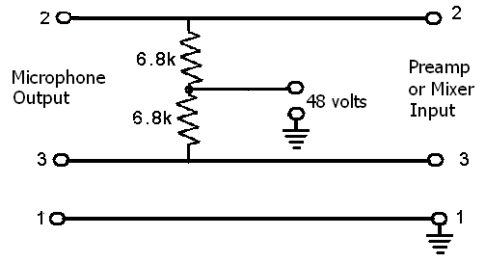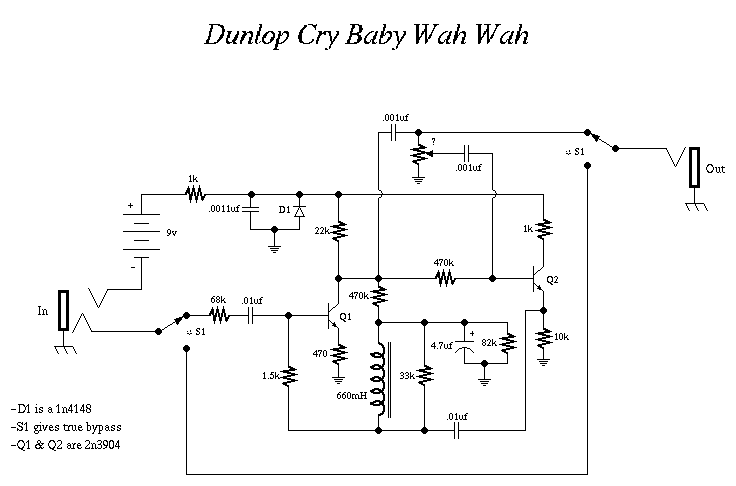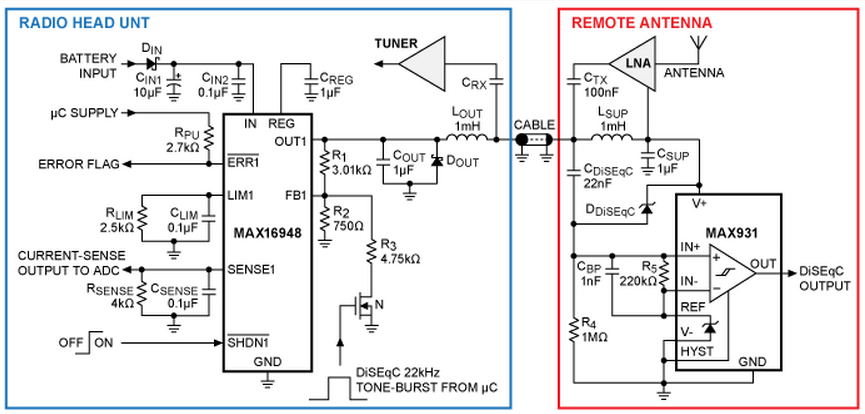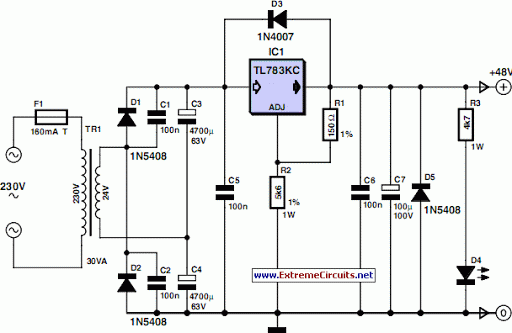
Phantom Wah for guitarists

This is an op-amp implementation of a Vox style wah, with the inductor replaced by a gyrator circuit. With the component values given the frequency response is similar to a standard wah. By replacing one of the resistors with a potentiometer the simulated inductance can be made continuously variable.
The circuit described is a variation of the classic wah-wah pedal, utilizing an operational amplifier (op-amp) to simulate the behavior of an inductor through a gyrator circuit. The gyrator allows for the emulation of an inductor's characteristics without the physical component, thereby reducing size and weight while maintaining functionality.
In this configuration, the op-amp is typically configured in a non-inverting amplifier mode, where the feedback loop contains the gyrator circuit. The gyrator is composed of capacitors and resistors, which are designed to create a phase shift and simulate inductance. The component values must be carefully chosen to achieve a frequency response that closely resembles that of a traditional wah pedal.
To enhance the versatility of the circuit, one of the resistors in the feedback loop can be substituted with a potentiometer. This modification allows the user to adjust the simulated inductance continuously, providing a wider range of tonal options and enabling the user to tailor the wah effect to their specific preferences.
However, it has been noted that the current iteration of the circuit suffers from an undesirable level of background hiss. This noise issue may arise from various factors, including insufficient power supply decoupling, improper grounding techniques, or the inherent noise characteristics of the op-amp used. Addressing these concerns is essential for improving the overall performance and usability of the circuit. Further refinements and testing are necessary to eliminate the background noise and enhance the circuit's reliability for practical applications.This is an op-amp implementation of a Vox style wah, with the inductor replaced by a gyrator circuit. With the component values given the frequency response is similar to a standard wah. By replacing one of the resistors with a potentiometer the simulated inductance can be made continuously variable.
Currently this circuit has an unacceptable level of background hiss and is therefore reverted to experimental status. I will post a new version when I've got rid of the wretched noise. 🔗 External reference
The circuit described is a variation of the classic wah-wah pedal, utilizing an operational amplifier (op-amp) to simulate the behavior of an inductor through a gyrator circuit. The gyrator allows for the emulation of an inductor's characteristics without the physical component, thereby reducing size and weight while maintaining functionality.
In this configuration, the op-amp is typically configured in a non-inverting amplifier mode, where the feedback loop contains the gyrator circuit. The gyrator is composed of capacitors and resistors, which are designed to create a phase shift and simulate inductance. The component values must be carefully chosen to achieve a frequency response that closely resembles that of a traditional wah pedal.
To enhance the versatility of the circuit, one of the resistors in the feedback loop can be substituted with a potentiometer. This modification allows the user to adjust the simulated inductance continuously, providing a wider range of tonal options and enabling the user to tailor the wah effect to their specific preferences.
However, it has been noted that the current iteration of the circuit suffers from an undesirable level of background hiss. This noise issue may arise from various factors, including insufficient power supply decoupling, improper grounding techniques, or the inherent noise characteristics of the op-amp used. Addressing these concerns is essential for improving the overall performance and usability of the circuit. Further refinements and testing are necessary to eliminate the background noise and enhance the circuit's reliability for practical applications.This is an op-amp implementation of a Vox style wah, with the inductor replaced by a gyrator circuit. With the component values given the frequency response is similar to a standard wah. By replacing one of the resistors with a potentiometer the simulated inductance can be made continuously variable.
Currently this circuit has an unacceptable level of background hiss and is therefore reverted to experimental status. I will post a new version when I've got rid of the wretched noise. 🔗 External reference





